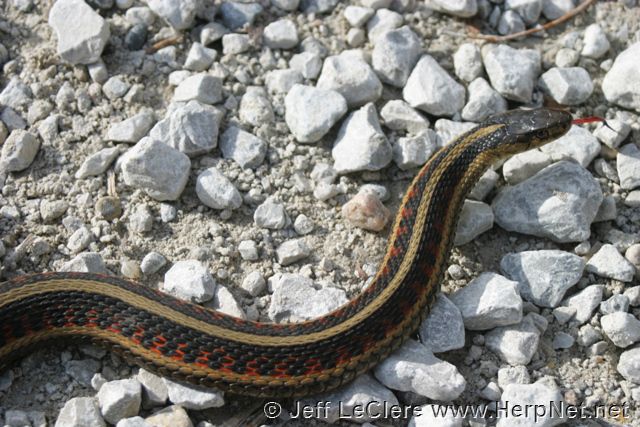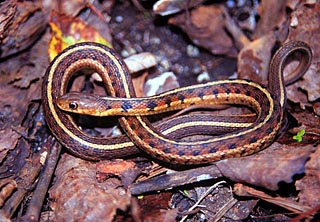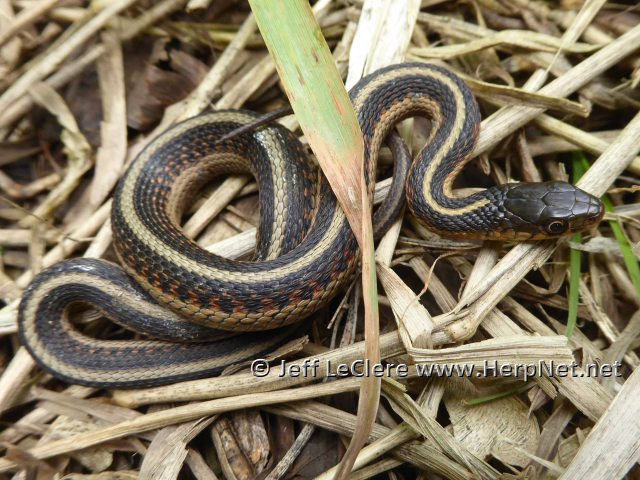Common Garter Snake (Thamnophis sirtalis)
Alternate names: Common Gartersnake
by Jeff LeClere
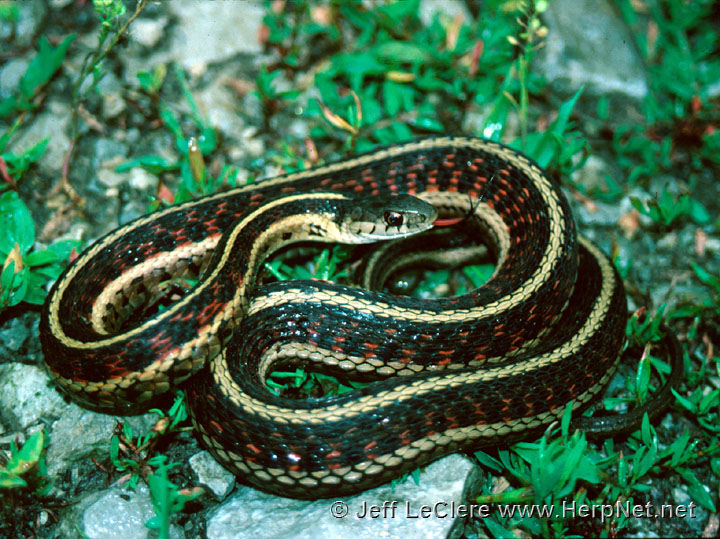
Status
No status. Garter snakes are afforded no protection in Iowa. Common garter snakes are found statewide.
Description
Harmless to humans. The common garter snake is a medium sized Iowa snake measuring 14 – 48 inches in length (Conant and Collins, 1991). The ground color is light brown to black with two alternating rows of black spots. Some specimens have a lighter brown background color in which the spots stand out especially well. There are three longitudinal stripes. The dorsal stripe is usually yellow. The lateral stripes are cream to yellow and are located on the second and third scale rows. There is usually a row of black spots below the lateral stripes.
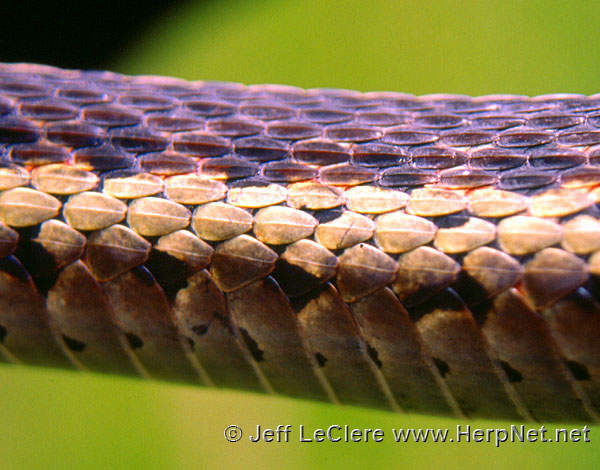
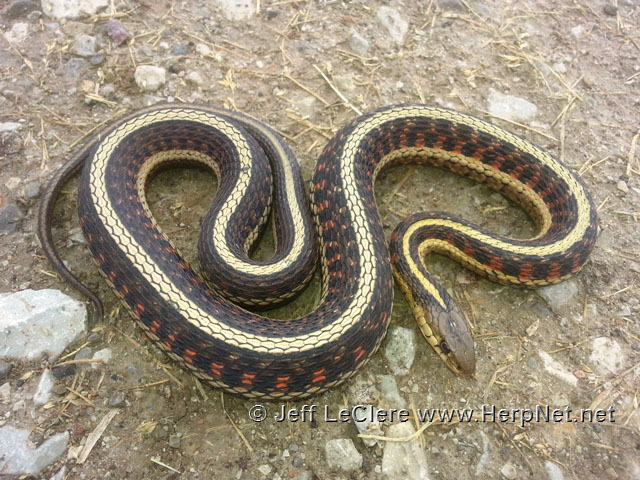
The belly may be white, yellowish, or bluish. A specimen from Ringgold County had red pigment on the underside of the tail. The head is brown or black with one or two small yellow dots near the parietal scales atop the head (these may be absent) and none or very few dark black bars on the labial scales. The scales are keeled and the anal plate is single. The similarly marked plains garter snake and western ribbon snake have the lateral stripes on rows three and four.
Subspecies
There are two subspecies of the common garter snake that are found in Iowa. The eastern garter snake, Thamnophis sirtalis sirtalis, usually has white, mint green, orange or red on the skin BETWEEN the scales (usually only visible when the skin is stretched such as after a large meal). The red-sided garter snake, Thamnophis sirtalis parietalis, is very similar, differing only by the presence of bold red bars or spots on the sides between the dorsal and lateral stripes. This red coloration is usually visible without any stretching of the skin. Both of these subspecies may also be called common garter snakes. Either subspecies may be found anywhere in the state.
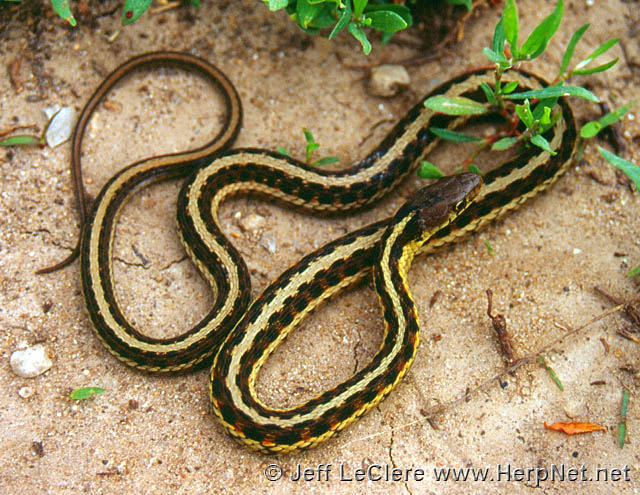
Range
According to Conant and Collins (1991), the eastern garter snake is basically found in eastern Iowa, while the red-sided garter snake inhabits the western portion of the state. However, these subspecies intergrade heavily in Iowa. Individuals also vary in coloration, thus specimens resembling either subspecies may be found anywhere in the state. The common garter snake is found statewide.
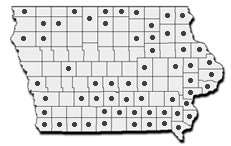
Habitat
The common garter snake is one of Iowa’s most common and familiar snakes. They occur almost anywhere there is adequate food and shelter. They are extremely adaptable to environmental changes, much like the plains garter snake. Unlike the plains garter snake, however, most common garter snakes prefer moist habitats, and may be found at the water’s edge. Open plains, grasslands, and forests or forest edge are also inhabited as well. City parks, vacant lots, farmlands, or suburban backyards are also utilized.
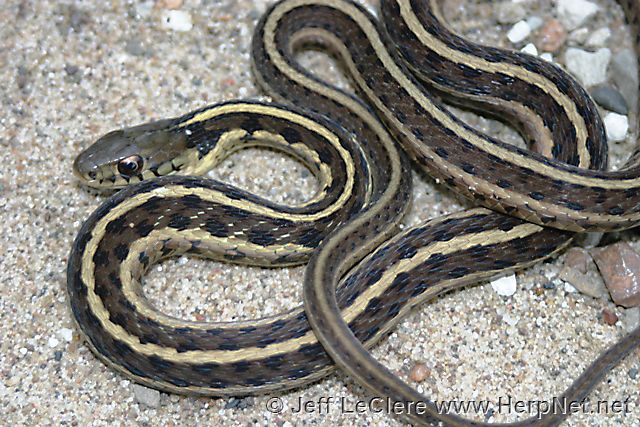
Habits
This is a diurnal, active snake that may be more aggressive than the plains garter snake. In addition to biting, it often expels a foul smelling musk and excrement to dissuade enemies. If cornered, it may strike (but its bite is painless), or it may hide its head under its coils, raise its tail in the air, and slowly wag its tail back and forth. They are active thermoregulators and will alternately hunt and bask throughout the day. They take refuge underneath logs, rocks, boards, and in mammal burrows. They breed in the spring and the young are born alive in late summer or autumn. There may be 10 – 70 or more in a litter and are 5-8 inches in length. A female found road-killed in Stevens County, Minnesota on June 13 contained 36 growing follicles.
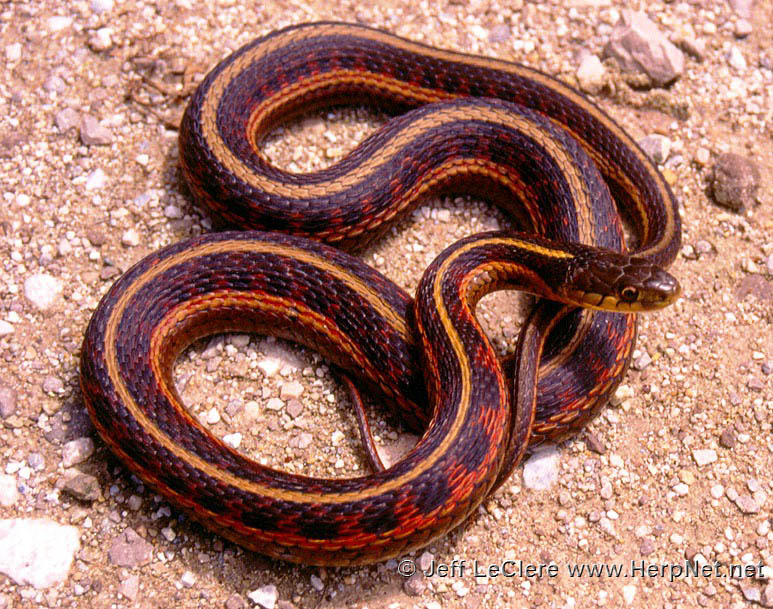
They may overwinter with other species of snakes and use any place they can to get below the frost line. Road embankments, mammal burrows, and basements are common overwintering sites. Great numbers of these snakes may be seen crossing roads in October as they migrate to their overwintering spots. I have seen many juveniles during this time in Polk and Cherokee counties. During the last few years, common garter snakes have been seen on warm days during every month of the year.
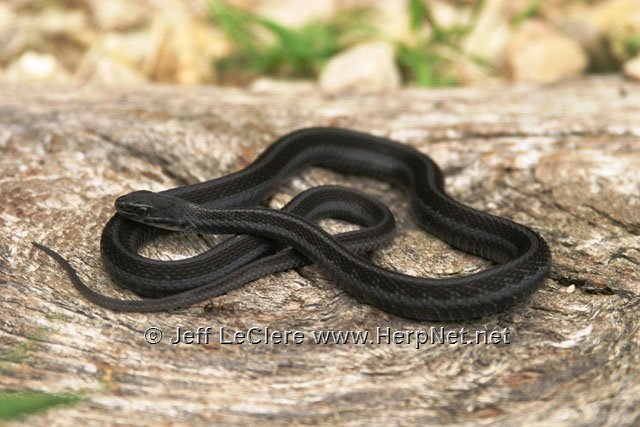
Food
Common garter snakes are voracious feeders and will eat anything they can catch and swallow. Earthworms, fish, frogs, toads, salamanders, mice, and birds’ eggs are consumed. These snakes eat carrion and will eat dead animals of many kinds that are small enough to swallow. I found and removed a specimen in Scott County, Minnesota from the road two or three times as it attempted to eat a very old DOR frog that was stuck to the pavement. Usually the warmer they are, the more kinds of food they will accept. They eat their prey without constriction, thus they have strong jaws to overpower their prey.
